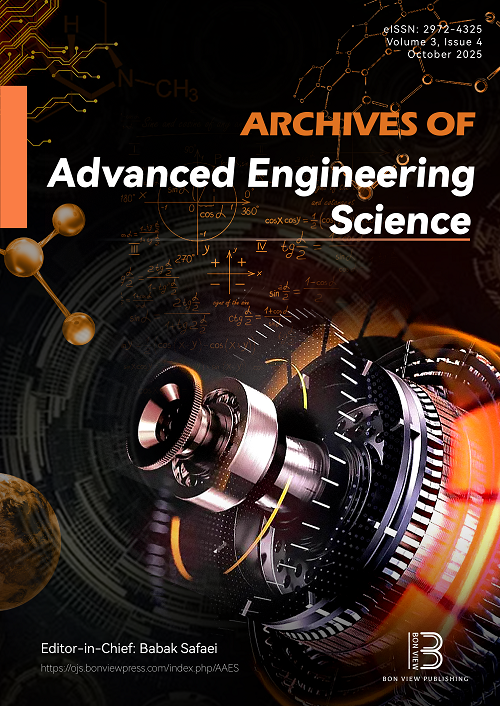Promoting Sustainable Green Infrastructure: Experimental and Numerical Investigation of Concrete Reinforced with Recycled Steel Fibers
DOI:
https://doi.org/10.47852/bonviewAAES42022837Keywords:
fiber-reinforced concrete, finite element methods, recycled steel fibersAbstract
Accumulation of waste tires and their respective fast increase are posing a great threat to the environment. Recycled steel fiber (RSF) extracted from the waste tires can be used in reinforced concrete considering proper fiber content and aspect ratio. Current research study aims to investigate the influence of RSF content (0.5%, 1.5% and 2.25%) on the mechanical properties such as compressive strength, split tensile, and flexural strength of recycled steel fiber reinforced concrete (RSFRC). The study also focused on developing numerical models such as fracture-plastic constitutive models using ATENA to validate the experimental results. The study was further extended by developing a slab model as a bus pad to find the behavior of RSFRC bus pad in response to the service loads and soil stiffness. In Baltimore City, inadequate design of bus pads posed strength and serviceability problems and needed to be investigated. From the test results, it was found that RSFRC mixture containing 1.5% RSF exhibited optimized behavior. Test results showed that 28-day compressive, split tensile, and flexural strength increased by 10.7%, 39.3%, and 10.4%, respectively, for the RSFRC mixture containing 1.5% RSF as compared to the control mixture without RSF and other RSF containing mixtures. The numerical model was developed and validated using experimental data. Various models of bus pads were then analyzed, focusing on their maximum load-bearing capacity and flexural toughness. It was observed that the maximum load-bearing capacity and flexural toughness of the bus pads increased with the use of RSFRC. These findings offer valuable insights for the construction industry, facilitating the efficient utilization of RSFRC in concrete applications.
Received: 16 March 2024 | Revised: 20 May 2024 | Accepted: 31 May 2024
Conflicts of Interest
The authors declare that they have no conflicts of interest to this work.
Data Availability Statement
Data are available from the corresponding author upon reasonable request.
Author Contribution Statement
Izhar Ahmad: Methodology, Software, Validation, Formal analysis, Investigation, Writing - original draft, Writing - review & editing, Visualization. Mehdi Shokouhian: Conceptualization, Methodology, Software, Resources, Writing - original draft, Writing - review & editing, Supervision, Project administration.
Downloads
Published
Issue
Section
License
Copyright (c) 2024 Authors

This work is licensed under a Creative Commons Attribution 4.0 International License.


